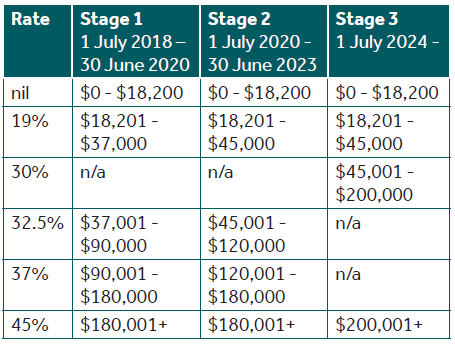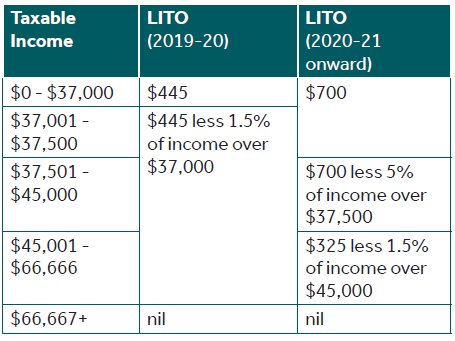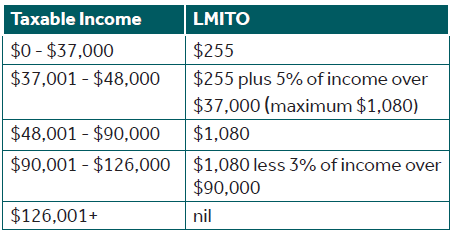Over the last seven months, the Government’s priority has been to stem the damage necessarily inflicted upon ourselves because of COVID-19. Those measures include the JobKeeper program, Cash flow boost, JobSeeker supplement, business loan guarantee program, and other support measures. And they have largely done their job. Despite an effective unemployment rate (ie, including stood-down JobKeeper recipients) of over 9%, and the economy shrinking by an astonishing 7% in the June 2020 quarter alone, these results would have been a lot worse without those support measures.
However, those support measures are slowing phasing out, and minimising the down has come at a cost. With a budget deficit of $213.7 billion for 2020/21, and more over the next few years, the Government must now turn toward building the recovery out of the COVID-19 recession. And that’s where Budget 2020 comes in, featuring a number announced measures as part of the Government’s “JobMaker” plan.
We set out a summary of the key measures announced affecting business and individuals, and what they mean for you. Read more below or click here to download our 2020 Federal Budget Announcement Guide.
Nexia Budget Guide Contents
Contents: Scroll to Individuals / Scroll to Businesses / Scroll to Industry / Scroll to International / Scroll to Superannuation / Scroll to Final Word
Talk to your trusted Nexia Edwards Marshall advisor about what any of the Budget announcements mean for you or your business.
Individuals

1. Income Tax Rate Cuts
Background
In the 2018 Federal Budget, the Government announced cuts to personal marginal tax rates, to be progressively phased in with the third and final stage taking effect from 1 July 2024.
Announcement
As a stimulus measure, the Government has now brought forward the second stage of the cuts that will now apply from 1 July 2020 instead of 1 July 2022.
The third stage of the cuts is unaffected by the Budget announcement.

The Government has not announced any changes to the Medicare Levy, currently levied at a flat rate of 2 per cent in addition to the marginal rates listed above.
Similarly, no change to the Medicare Levy Surcharge has been announced.
Some taxpayers may be exempt from the Medicare Levy and the Medicare Levy Surcharge.
What this means for you
The backdating of the tax rate cuts to 1 July 2020 means the change will have retrospective effect. Most salary and wage earners will see more money in their pay packet almost straight away after the change is legislated. Payroll software will need to be reconfigured to ensure the correct amount of PAYG tax is withheld, going forward.
2. Low Income Tax Offset & Low and Middle Income Tax Offset
Background
The Low Income Tax Offset (LITO) is a rebate of tax available to individuals whose incomes are less than $66,667 in an income year.
The Low and Middle Income Tax Offset (LMITO) is a further rebate of tax available to individuals whose incomes are less than $126,000 in an income year.
Announcement
The planned increase in the maximum annual rebate available under LITO from $445 to $700 per year, previously scheduled for introduction in the income year ending 30 June 2023, will be brought forward to the current income year, based on the following schedule:

The LMITO was scheduled to cease with the introduction of Stage 2 of the cuts to personal income tax rates on 1 July 2022. Stage 2 has been brought forward, with effect from 1 July 2020, however the LMITO will be retained for the current income year, with the existing maximum rebate retained at $1,080 based on the following schedule:

What this means for you
The rebate becomes available upon lodgement of the individual’s tax return.
3. Exempting Granny Flat Arrangements from Capital Gains Tax
Background
Capital gains tax (CGT) may apply to the creation, variation or termination of a formal written granny flat arrangement which enables accommodation for older Australians or people with disabilities. The granting of a right to occupy a property for life or a certain term is a taxing event and the ensuing taxable capital gain may be the present value of the right to receive income over many years – this could amount to many thousands of dollars.
Announcement
The Government has decided that CGT will not be payable where a formal written agreement is entered into with an older or disabled Australian.
What this means for you
Children will now be able to accommodate older parents or disabled relatives under a formal written lease agreement without being subject to CGT. This is expected to encourage accommodation arrangements for older and disabled Australians and reduce financial abuse of such people.
Date of Effect
This measure will have effect from the first income year after the date of Royal Assent of the enabling legislation.
Contents: Individuals / Businesses / Industry / International / Superannuation / Final Word
Businesses

1. JobMaker Hiring Credit
Background
The Government’s approach throughout the COVID-19 pandemic has been predominantly to support maintenance of private sector employment. This is now pivoting to supporting the creation of new employment.
Announcement
The Government will encourage employment growth over three years by providing a hiring credit to eligible employers who take on additional eligible employees. The credit will be provided for 12 months for each eligible new hire that increases overall employee headcount from a reference date of 30 September 2020. The credit will be $200 per week for eligible employees hired aged 16 to 29 years, and $100 per week where aged 30 to 35 years. The maximum credit receivable for an employee is $10,400 ($200 x 52 weeks).
To be an eligible employee, the individual will need to have worked 20 or more hours per week, averaged over a quarter, and received JobSeeker, Youth Allowance (Other) or Parenting Payment for at least one month out the three months prior to being hired.
To be an eligible employer, amongst other requirements, tax lodgements must be up to date, report through Single Touch Payroll, and have kept adequate records.
What this means for you
Where your business needs to hire new employees, there is an incentive to prefer those who would qualify as an eligible employee. Receipts such as these are usually assessable income to your business, unless specifically exempted. No mention has been made yet on whether the credit will be made tax exempt.
2. Extension of Small Business Concessions
Background
A Small Business Entity is currently defined as business with group-wide turnover of less than $10 million, which entitles them to a series of concessions for income tax, FBT, and GST.
Announcement
The turnover threshold to be a Small Business Entity will be increased to $50 million, with access to the concessions in three phases:
1. 1 July 2020 in respect to the immediate deduction of:
a. certain business start-up expenses
b. prepayments
2. 1 April 2021 in respect of the exemption from FBT:
a. for car-parking; and
b. provision of more than one work-related portable electronic device
3. 1 July 2021 in respect of:
a. Simplified trading stock rules;
b. Making PAYG Instalments based on GDP adjusted notional tax;
c. Two-year amendment period;
d. Monthly payment of excise duty and excise-equivalent customs duty on eligible goods
The Commissioner of Taxation will also be given the power from 1 July 2021 to issue a Simple GST accounting method determination for businesses with a turnover of less than $50 million.
What this means for you
Around 20,000 more businesses will be able to use these concessions to reduce their costs of complying with their tax obligations. The $50 million turnover threshold will also now align with the threshold for the lower 26% company tax rate.
3. Temporary full expensing of eligible depreciable assets
Background
Prior to COVID-19 (pre 12 March 2020) the instant asset write-off incentive enabled businesses with a group-wide turnover of less than $50 million to immediately deduct the cost of depreciating assets that cost less than $30,000 (net of GST credit).
In response to COVID-19, the Government expanded the eligibility by increasing the group-wide turnover threshold from $50 million to $500 million, and increased the cost threshold limit to under $150,000. These rules applied from 12 March 2020 until 31 December 2020.
Announcement
The instant asset write-off will be further expanded whereby businesses with a group-wide turnover of less than $5 billion can deduct the full cost of eligible assets acquired from 7.30pm AEDT on 6 October 2020 until 30 June 2022. This is available on new depreciable assets and the cost of improvements to existing eligible assets. These rules also apply to second-hand assets if group-wide turnover is less than $50 million.
Businesses with an aggregated turnover of between $50million and $500 million can still deduct the full cost of eligible second-hand assets costing less than $150,000 provided they are purchased before 31 December 2020 and first used or installed by 30 June 2021.
Small businesses with group-wide turnover of less than $10 million can deduct the balance of their small business pool at the end of the income year while the full expensing applies.
What this means for you
These enhanced rules will enable businesses to deduct the full cost of asset in the year they are first used or installed ready for use. This incentive brings forward the deduction that you would have received in future years (ie a timing difference) and allows for a cash flow benefit to be received sooner rather than later.
We note that the best reason to acquire any new asset is not a tax write-off, but rather the judgement that your business will earn a sufficient commercial return from investing in that asset. The full tax deduction is merely a timing difference – you would normally deduct the cost over several years anyway – and should be viewed more as a bonus to the commercial return.
4. Temporary Tax loss “carry-back”
Background
Currently, companies incurring tax losses must carry those losses forward and offset them against future years’ profits. Thus, any tax saving is not realised until that future time when the company is again profitable.
Announcement
The Government will allow companies with group-wide turnover of less than $5 billion to offset tax losses incurred in the 2019-20, 2020-21 or 2021-22 income years against prior year profits (from the 2018-19 year or later) on which they have previously paid tax. This will generate a refundable tax offset, available when lodging company tax returns for 2020-21 and 2021-22 years.
The amount to be “carried-back” however, will be limited to the amount of the taxable profit in that prior year and must not generate a franking account deficit.
What this means for you
This measure will provide much needed cash flow support to what were previously profitable companies that now find themselves in a tax loss position because of the COVID-19 pandemic. It also provides an incentive for companies to take advantage of the abovementioned full expensing measures while they are available.
The following example illustrates the benefits of these measures.
Smith Builders Pty Ltd has group-wide turnover of $60 million for the 2021-22 year. On 1 July 2021, the company purchases a new deliveries truck for $500,000 (excluding GST). Smith Builders Pty Ltd’s taxable income for the 2021-22 year is $300,000 before the purchase. Without full expensing, the company would claim a depreciation deduction of approximately $70,000, resulting in a taxable income of $230,000 and tax payable at 30% of approximately $69,000.
Instead, under the full expensing measures, Smith Builders will be able to claim a full tax deduction for the $500,000, resulting in a tax loss of $200,000. Under the tax loss carry back, Smith Builders offsets this loss against profits from 2018-19 year resulting in a tax refund at 30% of $60,000.
The combination of the full expensing and loss carry-back measures results in $129,000 ($69k + $60) additional cash available.
5. Wage subsidy for new apprentices
Background
In March, a wage subsidy commenced to support maintaining apprentice employment. It was due to end in September, but has been extended to July next year. However, this subsidy applies only to existing employed apprentices, and is available only for businesses with fewer than 20 employees.
Announcement
From 5 October 2020, employers will be eligible for a 50% wage subsidy for new or recommencing apprentices. The subsidy is 50% of the apprentice’s wages, up to $7,000 per quarter. Employers of any size or industry will qualify. The subsidy will be available until 30 September 2021.
What this means for you
Irrespective of any subsidy, there must be a business case to take on a new employee. However, the point of temporarily subsidising the cost of employment is to tip a business with a borderline or lesser business case into hiring a new apprentice earlier. The information released also states that the program will run until a target cap of 100,000 new apprentices is achieved. It is unclear if the subsidy will cease before 30 September 2021, should the cap be reached before then.
6. FBT Exemption for Employers and a Tax Deduction for Employees for Skills Training
Background
An employer does not pay FBT on providing their employees with skills training in circumstances where the employee would have been able to claim a tax deduction if they had instead paid for the training.
An employee is currently entitled to a tax deduction where the training relates to their current income-earning activities. For example, a sales assistant who undertakes a web-design course with the aim of obtaining an online marketing position with their current employer is unable to claim a tax deduction even though the course leads to higher income with their current employer. If the employer paid for providing the web-design training in this situation, FBT would be payable.
Announcement
Retraining and reskilling provided by an employer to their redundant or soon-to-be-redundant employees from 2 October 2020, possibly to enable the employees to be redeployed to a different role within the business, will be exempt from FBT.
The exemption will not apply to salary sacrifice arrangements or for training provided through Commonwealth-supported university places.
The Government has also announced that consultations will be undertaken with view of amending the tax law to allow workers to claim a tax deduction for self-education expenses that do not relate to their current income-earning activities.
What this means for you
This means that employers will be able to provide assistance to their employees to retrain and reskill them without being liable for FBT.
Employees may also be able to claim a wider range of self-education expenses not related to their current employment, thus reducing the cost of reskilling and retraining.
7. JobMaker Plan – Research and Development Tax Incentive
Background
Currently, the R&D Tax Incentive states that companies with a group-wide annual turnover of less than $20 million that are not controlled by exempt entities receive a refundable tax offset for R&D expenses of 43.5% and other companies receive a tax offset for R&D expenses of 38.5%.
However, a Bill is currently before the Senate Economics Legislation Committee that proposes major changes to the R&D Tax Incentive retrospectively for income years after 1 July 2019.
This Bill proposes:
- A refundable tax offset rate of the relevant corporate income tax rate plus 13.5% for companies with group-wide annual turnover of less than $20 million that are not controlled by exempt entities, with the cash tax refund to be limited to $4 million;
- A tax offset rate of the relevant corporate income tax rate plus intensity premiums for larger companies; and
- To increase the maximum R&D expenditure threshold from $100 million to $150 million.
Announcement
All changes to the R&D Tax Incentive will apply to income years starting on or after 1 July 2021. Retrospective changes for income years after 1 July 2019 will not be proceeded with.
Companies with group-wide annual turnover of less than $20 million will receive a refundable tax offset for R&D expenses of their corporate tax rate plus 18.5% (i.e. this will restore the existing rate of 43.5% because the corporate tax rate for smaller companies will be cut to 25% in the 2022 income year). There will be no cap on the annual cash tax refund.
Companies with an aggregated annual turnover of greater than $20 million will still be required to calculate their R&D tax offset rate based on their corporate income tax rate plus intensity premiums but the calculation of the intensity premiums is both simpler and significantly more generous. R&D intensity is R&D expenditure as a proportion of total expenses for the income year. The intensity premium for R&D expenditure of 0-2% R&D intensity is 8.5% and the intensity premium for R&D expenditure of over 2% R&D intensity is 16.5%.
The maximum R&D expenditure threshold will be increased from $100 million to $150 million.
The Government also will proceed with other technical measures as previously announced.
What this means for you
Companies are no longer exposed to unfavourable retrospective legislation because all changes will only apply for income years starting on or after 1 July 2021.
Companies with group-wide annual turnover of less than $20 million will now see minimal change to the calculation of their refundable tax offset, although we note that the rate of offset is being maintained even though the tax rate is being cut.
Larger companies with R&D intensity of over 2% and/or total R&D expenditure over $100 million should be able to claim a greater R&D tax offset going forward.
8. Deregulation agenda
Background
The government has a Deregulation Taskforce, led by Assistant Minister to the Prime Minister, Ben Morton. Its role is to identify and eliminate unnecessary, disproportionate, and inefficiently implemented regulation. It concentrates on surgical investigations by working closely with business, and recent policy announcements include investing in enabling business with greater access to digital technology, the small business insolvency reforms and simplified access to consumer and business credit.
Announcement
The Taskforce has assembled a Deregulation Package, including a new regulator performance role, to set systematic expectations, and promote a culture of regulator excellence. The package will feature a pilot training program, laying the foundation for regulator upskilling across the government. This stewardship approach is intended to improve regulator culture and client focus, and promote regulation that is fit-for-purpose. The outcomes sought are boosting productivity and competitiveness, support well-functioning markets, support business investment, and create jobs.
What this means for you
A frequent frustration in the business community stems from dealing with regulators who have no commercial experience. This can result in costly compliance processes that are unnecessary or inefficient. Improving regulator culture, and understanding of the businesses they regulate, is a welcome initiative.
9. Digital Business Platform
Background
Business registers and records held by the Government are spread across many platforms that are not integrated and often difficult to locate and access. The information is not held as effectively as technology now enables.
Announcement
The Government has announced that $420 million will be spent over four years transferring existing registers into a modernised platform that provides a single, accessible source of business data. It will be administered by the Australian Taxation Office (ATO).
A proposed $256.6 million has been earmarked for the development of digital identities, including the Director Identification Scheme, and $3.6 million to consult on the adoption of e-invoicing for Government and business transactions. This is being developed by the ATO in conjunction with designated software providers.
What this means for you
Various government registers will be consolidated into one platform, meaning information should be easier to find, saving time and assist regulators to identify those attempting to do the wrong thing.
E-invoicing introduces a seamless exchange of invoices between buyers and suppliers which will enhance efficiency and reduce errors for businesses. As it operates on a centralised system, this information will be accessible by the Government and will enhance their ability to identify non-disclosure of income and other illegal activity.
10. Victoria’s Business Support Grants
Background
The Victorian State Government has provided various business grants to assist eligible businesses to get through and recover from the impact of COVID-19.
Announcement
The Federal Government announced that grants paid to small and medium businesses as part of Victoria’s Business Resilience Package will be exempt from income tax.
What this means for you
State governments grants are usually assessable for income tax purposes, however the difficulties faced by Victorian businesses due to COVID-19 have been recognised. In order to assist in business recovery, grants announced on or after 13 September 2020, and received between 13 September 2020 and 30 June 2021 will not be added to the taxable income of the business.
While the announcement relates to Victorian Government grants, other states may apply to the Federal Government for the same tax concessions if the grants relate to COVID-19 business support.
Contents: Individuals / Businesses / Industry / International / Superannuation / Final Word
Industry

1. Modern Manufacturing Strategy
Background
Australia’s ‘modern manufacturing strategy’ has three key goals:
- Create a business environment where manufacturers can be more competitive;
- Align resources to build scale in areas where we have competitive strength; and
- Secure Australian capabilities in areas of national interest.
The Government aspires to implement a platform, within 10 years, on which industry, workers, unions, governments, capital-owners and scientists are acting in unison to meet those goals.
Announcement
Six key areas of strength and priority have been identified for investment:
- Resources technology and critical minerals processing
- Food and beverage manufacturing
- Medical products
- Clean energy and recycling
- Defence
- Space
Public and Private sector leaders will partner to develop ‘industry-led roadmaps’, which will identify growth opportunities, barriers to scale, and dangers to the supply chains.
What does this mean for me?
If you are currently in one of the nominated areas, or an industry which supplies to, or buys from, those areas, you should follow announcements and developments. There may be opportunities to apply for grants, tender for business opportunities, attract co-investors and receive other subsidies.
2. Spending on infrastructure
Background
With a focus on economic recovery through jobs, the government has made further announcements with respect to its investment in infrastructure that supports thousands of jobs on worksites across the country.
Announcement
The budget will fund major shovel-ready projects across each state on a “use it or lose it” basis. Any state that is too slow off the mark will see its funding reallocated to another state.
Together with the announcements since the start of the COVID-19 crisis, the measures announced in the budget will see $14 billion in new and accelerated infrastructure projects including:
- The Singleton Bypass and Bolivia Hill Upgrade in New South Wales
- The upgrade of the Shepparton and Warrnambool Rail Lines in Victoria
- The Coomera Connector in Queensland
- The Wheatbelt Secondary Freight Network in Western Australia
- The Main South Road Duplication in South Australia
- The Tasman Bridge Upgrade in Tasmania
- The Carpentaria Highway Upgrades in the Northern Territory
- The Molonglo River Bridge in the Australian Capital Territory.
What this means for you
Businesses contracting in and servicing the associated industries may have increased opportunities to earn additional revenue.
Contents: Individuals / Businesses / Industry / International / Superannuation / Final Word
International

1. Clarifying Corporate Tax Residency Test
Background
Australian tax residents are taxable on their worldwide income. Non-tax residents are taxable only on their Australian sourced income. A company is a tax resident if it is incorporated in Australia. Alternatively, if it is incorporated overseas, it will be a tax resident if it carries on business in Australia and has either its central management and control here, or is controlled by Australian tax residents. However, the Courts have held that if a company’s central management and control is in Australia, that amounts to carrying on business here, and so the company is a tax resident of Australia.
Announcement
The definition of ‘resident’ for a company will be changed so that a foreign-incorporated company will be a tax resident in Australia only if both its core commercial activities are undertaken in Australia and its central management and control is in Australia. This is likely to be referred to as the “significant economic connection to Australia” test.
What this means for you
The application of the Australian tax residency rules will operate more as intended for foreign-incorporated companies when determining if they are Australian tax residents. This will obviate unnecessary precautions like Australian directors of foreign companies, with no operations in Australia, travelling abroad just to attend board meetings.
Date of effect
This measure will apply from the first year of income after the date of Royal Assent of the enabling legislation, but taxpayer companies will have the option of applying the new law from 17 March 2017.
2. Updating the list of Exchange of Information Jurisdictions
Background
Distributions by Australian managed investment trusts (MIT) to non-residents are subject to tax, which is deducted by the fund manager. The normal rate of tax is 30%. But if the recipient resides in a jurisdiction with which Australia has an agreement under which information about taxpayers is shared, the rate is reduced to 15%.
Announcement
The list of countries is being updated, with effect from 1 July 2021.
What this means for you
If you are a MIT or a resident of one of the updated countries with investments in an Australian MIT, you need to update your systems. Nine jurisdictions, notably including Hong Kong, are being added. Kenya is being removed.
Contents: Individuals / Businesses / Industry / International / Superannuation / Final Word
Superannuation

1. Superannuation Reform – YourSuper Portal
Background
Compulsory superannuation in Australia has resulted in a plethora of providers in the marketplace, some of which are underperforming. In addition, many Australians have more than one superannuation account, thereby duplicating fees paid.
Announcement
The Government has announced they will invest $159.6 million over four years to implement reforms to improve outcomes for superannuation fund members. New employees will be able to select a super fund from a table of products through the YourSuper portal.
A member’s super account will be ‘stapled’ to them, meaning it will follow them when they change employment.
From July 2021 the Australian Prudential Regulation Authority will conduct benchmarking on super products, with those underperforming over two consecutive annual tests not being allowed to accept new members. The results will be published.
What this means for you
The amount of multiple accounts that many Australians have will reduce and it will be easier to maintain one account, meaning unnecessary fees paid to providers will also reduce. The risk of fund balances for members being “lost” will decrease, thereby providing better outcomes for retirement.
Employers will probably not be able to just establish a new account for a new employee in their default fund, but will need to identify the superannuation account that has been attached the employee.
Contents: Individuals / Businesses / Industry / International / Superannuation / Final Word
Final word
Maximising the scale and speed of economic recovery will require more than stimulus measures within existing policy frameworks. It will require changes to the policy frameworks themselves. In other words, structural reform is needed across a range of policy areas.
The 2020 Budget is the pivotal point where we transition from fall-breaking support measures to economic-boosting stimulus and reform measures. Whether they will go far enough to turn the Government’s job-creating aspirations into reality will remain to be seen as we gladly see off 2020, and look toward 2021.
Talk to your trusted Nexia Edwards Marshall NT advisor about what any of the Budget announcements mean for you or your business.
Contents: Individuals / Businesses / Industry / International / Superannuation / Final Word


